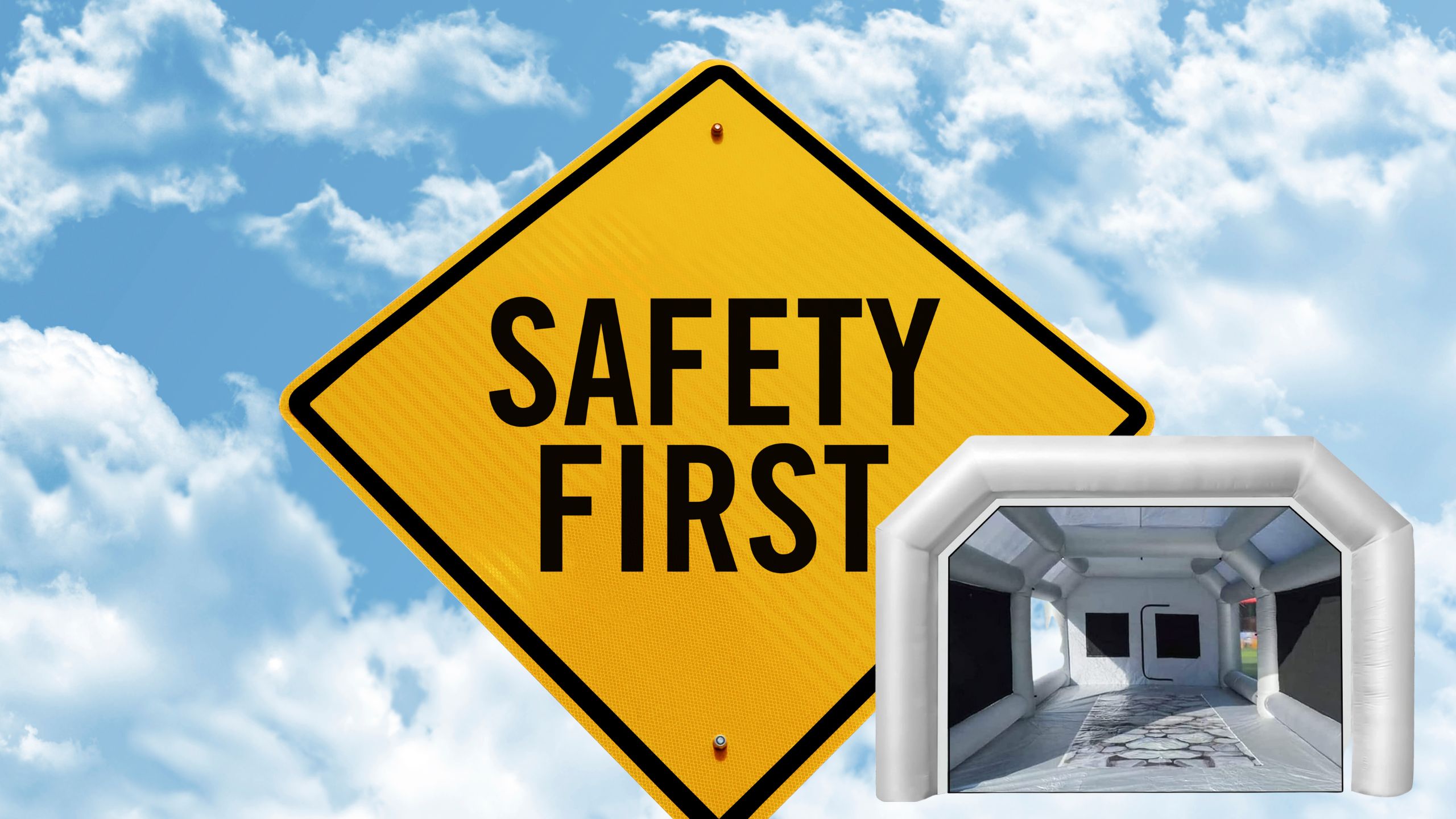In the world of professional painting, whether it’s for automotive, industrial, or artistic purposes, the importance of lighting cannot be overstated. Inflatable paint booths, known for their versatility and convenience, also face the challenge of ensuring optimal lighting. Adequate illumination is pivotal for accurate color matching, detecting imperfections, and ensuring a uniform application of paint.
Key Considerations for Lighting in Inflatable Paint Booths
1. Type of Lighting:
LED lighting is often the preferred choice for inflatable paint booths. LEDs offer bright, consistent light and have a high Color Rendering Index (CRI), which is essential for accurate color perception. Additionally, LEDs are energy-efficient and emit less heat, a crucial factor in a confined space like an inflatable booth.
2. Placement and Distribution:
The placement of lights is just as important as the type of light used. Ideally, lights should be placed to ensure even coverage without creating shadows or glare. Often, lights are installed on the ceiling and sides of the booth. The goal is to mimic natural daylight conditions as closely as possible.
3. Intensity and Brightness:
The brightness of the lights needs to be sufficient to illuminate every part of the object being painted. However, too much brightness can cause glare, leading to inaccuracies in painting. Adjustability in lighting can be beneficial, allowing the painter to increase or decrease the intensity as needed.
4. Durability and Safety:
Given the environment within a paint booth, lights need to be durable and safe. They should be enclosed in fixtures that protect them from paint and dust, and the electrical components must adhere to safety standards to prevent fire hazards.
Strategies for Optimizing Lighting in Inflatable Paint Booths
- Comprehensive Lighting Systems: Incorporate a combination of overhead and side lighting to ensure all angles are well-lit. This reduces the chances of missing spots or uneven application due to poor visibility.
- Adjustable and Customizable Solutions: Implement lighting systems that allow for adjustments in terms of angle, intensity, and even color temperature. This flexibility can cater to various painting requirements and personal preferences.
- Regular Maintenance: Keep the lighting system clean and well-maintained. Dust and paint overspray can accumulate on light fixtures, diminishing their effectiveness.
- Professional Installation and Setup: Consider professional help for the installation of lighting systems, especially for complex setups or large booths. This ensures optimal placement and wiring for safety and efficiency.
Conclusion
Effective lighting within inflatable paint booths is a critical factor for achieving professional-grade painting results. By selecting the right type of lighting, strategically placing it, and maintaining it well, painters can significantly improve the quality and accuracy of their work. It’s an investment in both the functionality of the paint booth and the quality of the finished product. With thoughtful planning and execution, managing lighting in inflatable paint booths can transform the painting process, leading to exceptional results every time.


